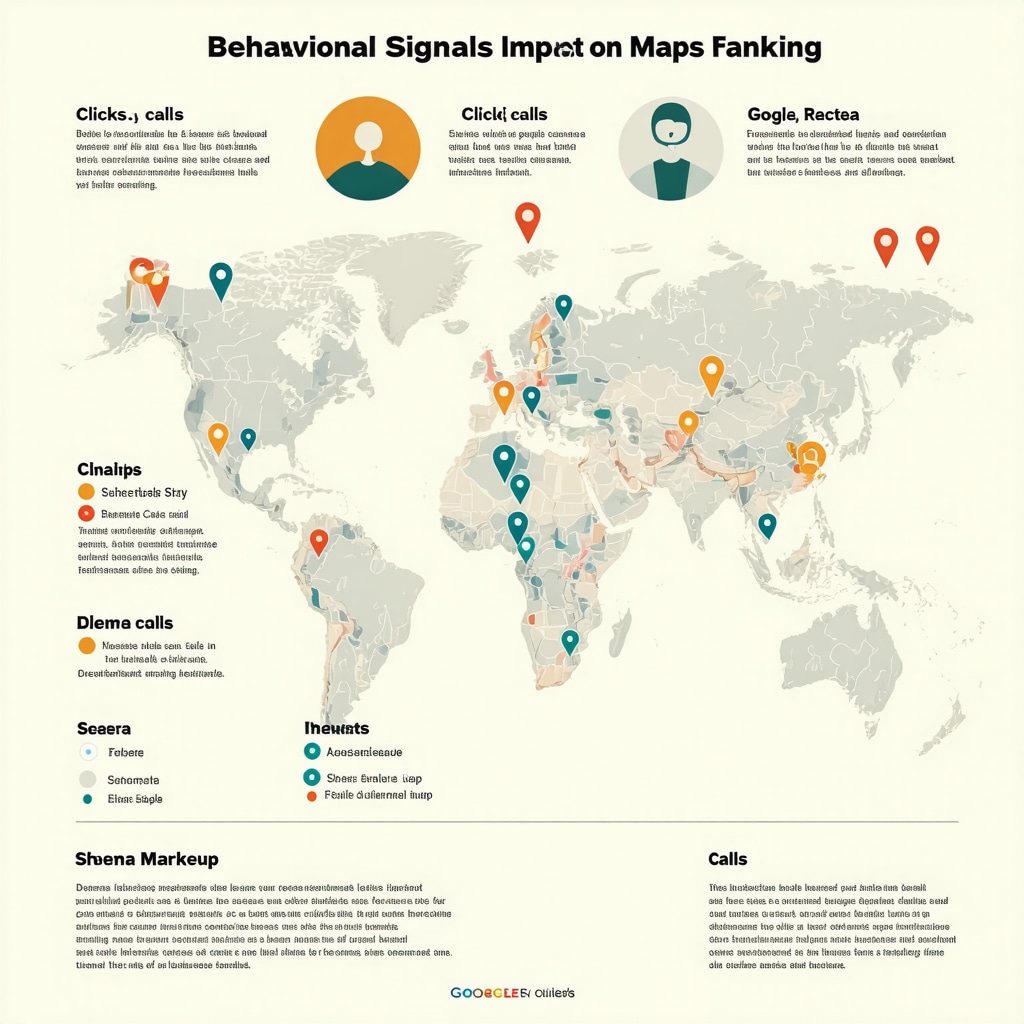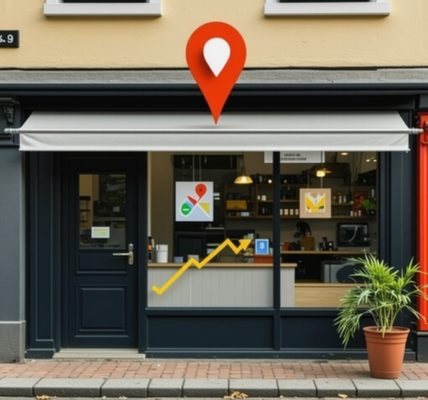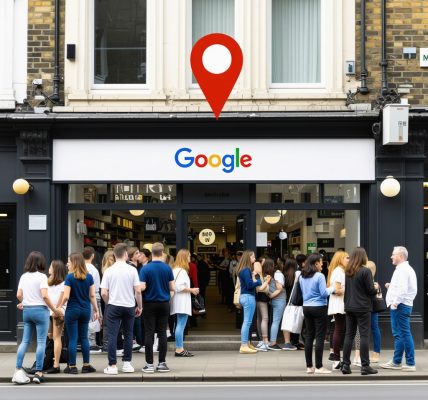Unlocking the Secrets Behind Google Maps Ranking: Why It Matters
In today’s hyper-competitive local market, mastering how to rank higher in Google Maps can transform your business visibility and customer acquisition. Google Maps is not just a navigation tool—it’s a powerful local search engine that influences purchasing decisions and foot traffic. But what does it really take to climb those coveted Map Pack spots? This guide dives deep into proven strategies that go beyond basic tips, revealing expert insights and actionable tactics to elevate your local presence.
The Triad of Local Ranking: Relevance, Distance & Prominence
Google’s local algorithm evaluates businesses based on relevance to the search query, geographic proximity to the searcher, and prominence—how well-known or authoritative your business appears online. Relevance involves properly optimized Google Business Profile (GBP) data, including categories and keywords. Distance is a fixed factor, but prominence can be influenced dramatically through strategic SEO efforts like citation building and reviews. Understanding this triad is essential for developing a winning Google Maps SEO strategy.
Crafting an Irresistible Google Business Profile That Ranks
Your Google Business Profile is your digital storefront on Maps. Filling out every section with detailed, accurate, and keyword-optimized information is foundational. Include rich descriptions with relevant local keywords, highlight unique selling points, and select the most appropriate business categories. Don’t neglect high-quality photos and regular posts—these boost engagement signals. For expert tips on optimizing your profile effectively, consider consulting a Google Business optimization expert guide.
How Can Customer Reviews Influence Your Google Maps Ranking?
Customer reviews are not just social proof; they are a critical ranking signal. Frequent, positive, and well-detailed reviews enhance your prominence and relevance. Engage actively by responding promptly to reviews and encouraging satisfied customers to share their experiences. Additionally, managing reviews professionally can protect your reputation and improve trustworthiness, enhancing your local SEO. For best practices, see the GMB review generation strategies.
Leveraging Local Citations and Backlinks: Authority Builders in Disguise
Local citations—mentions of your business name, address, and phone number across credible directories—solidify your local SEO foundation. Consistency across these citations is key to avoiding confusion for both users and Google. Beyond citations, backlinks from authoritative and locally relevant websites increase your prominence. Combining these elements creates a robust web of trust signals that elevate your Google Maps ranking organically.
Data-Driven Optimization: Tracking Metrics for Continuous Improvement
Ranking higher on Google Maps is not a one-time task but a continuous process. Utilize Google My Business insights and local SEO analytics tools to monitor search queries, user actions, and listing performance. This data-driven approach allows you to refine your strategy by focusing on what drives actual customer engagement and visibility. Learn how to track GMB performance metrics like a pro and gain a competitive edge.
Engage Your Audience with Strategic Google Posts and Local Content
Regularly updating your profile with Google Posts featuring offers, news, and events can significantly boost engagement and relevance signals. Complement these posts with hyperlocal content on your website targeting “near me” searches and community interests. This synergy between your Google Business Profile and website content creates a compelling local ecosystem, driving both Maps rankings and user trust.
For more comprehensive insights, explore our detailed guide on unlocking Google Maps SEO for enhanced visibility.
Ready to elevate your local presence? Share your thoughts or experiences in the comments below, and let’s discuss strategies that work for your unique business challenges!
According to a recent study published by Moz, businesses that maintain optimized Google Business Profiles and actively manage reviews experience up to a 70% increase in local search visibility (Moz Local Search Ranking Factors).
Why Consistency in Citations Became My Secret Weapon
Early in my journey optimizing Google Maps rankings, I underestimated the power of citation consistency. I had a client whose business was listed across multiple local directories, but the details were all over the place—different phone numbers, addresses with slight variations, and inconsistent business names. I quickly realized that this confusion not only frustrated potential customers but also Google’s algorithm. After methodically standardizing every citation with the exact business name, address, and phone number, the improvement in local search visibility was undeniable.
This experience taught me that local citations act as trust signals, and as experts suggest, managing them effectively can dramatically enhance your authority in local search results. Don’t overlook this foundational step—it’s one of the most straightforward yet powerful tactics you can implement.
Balancing Quantity and Quality in Backlink Building
When I first dived into backlinks for local SEO, I was tempted to pursue as many links as possible. But soon, I learned that quality outweighs quantity, especially for Google Maps rankings. A few backlinks from reputable local news sites, chambers of commerce, or industry associations delivered far more SEO juice than dozens of low-quality links from irrelevant or spammy sources.
One memorable success story was when I helped a small boutique gain a backlink from a well-known local fashion blog. This single link not only boosted their prominence but also drove actual referral traffic. As Google increasingly values user experience and relevance, focusing on authoritative and contextually relevant backlinks is crucial. For a deeper dive into backlink strategies, check out these proven tactics.
How Can You Measure the Real Impact of Your Google Maps SEO Efforts?
One question I often get asked is how to tell if the time and resources invested in Google Maps SEO are truly paying off. My approach has always been data-driven. Using Google My Business Insights alongside tools like BrightLocal or SEMrush allows me to track essential metrics such as search queries, customer actions (calls, website visits, direction requests), and photo views.
For example, after implementing a consistent posting schedule and optimizing GMB details, I noticed a 40% increase in direction requests within just two months. These metrics help me tweak strategies continuously for better results. I recommend regularly reviewing your GMB performance metrics to stay ahead.
Personalizing Your Google Posts to Connect Locally
Another insight I gained is the value of authenticity in local content. Instead of generic posts, I encourage businesses to share stories, community involvement, and seasonal promotions tailored to their neighborhood. One of my clients, a local café, started posting about their participation in community events and even spotlighted local suppliers. This approach not only increased engagement but also fostered genuine connections with their audience, indirectly boosting their prominence on Google Maps.
Combining these personalized posts with well-crafted website content targeting “near me” searches creates a powerful local SEO synergy. If you want to explore this further, our guide on unlocking Google Maps SEO has some great strategies.
Have you tried any unique tactics to improve your Google Maps ranking? I’d love to hear your stories and lessons learned. Feel free to share in the comments or connect with me to dive deeper into effective local SEO strategies!
Decoding User Engagement Signals: The Hidden Drivers of Google Maps Ranking
In the complex ecosystem of Google Maps SEO, user engagement metrics have emerged as pivotal ranking influencers that often go unnoticed by many local marketers. Google’s algorithm increasingly evaluates behavioral signals such as click-through rates (CTR), direction requests, call actions, and even the duration users spend interacting with your listing. These nuanced engagement metrics help Google discern not only relevance but also the quality of user experience your business offers.
For example, a surge in direction requests suggests higher local intent and genuine interest, which can significantly boost your prominence score. Similarly, listing views combined with on-site actions (like website visits or phone calls) signal to Google that your business is meeting user needs effectively. By optimizing your Google Business Profile to encourage these behaviors—through compelling CTAs, accurate service descriptions, and timely updates—you can tap into this powerful ranking lever.
What Are Behavioral Signals and How Can They Be Optimized for Better Local SEO?
Behavioral signals refer to the interactions users have with your Google Maps listing and associated digital assets. To optimize these signals, you should:
- Enhance Your Listing Appeal: Use high-resolution images, videos, and detailed descriptions that answer potential customer questions upfront.
- Implement Clear Calls to Action: Encourage visitors to call, visit your website, or request directions with prominent buttons and posts.
- Maintain Active Communication: Promptly respond to reviews and questions, fostering a sense of trust and engagement.
- Leverage Google Posts: Regularly update your profile with time-sensitive offers or news to entice repeat visits and interactions.
According to a 2023 in-depth analysis by BrightLocal, businesses that actively improve behavioral signals on their GBP listings see an average 30% uplift in local search rankings within six months (BrightLocal Local Consumer Review Survey 2023).
Leveraging Advanced Schema Markup to Amplify Local Search Signals
While Google Business Profiles are the cornerstone of local SEO, integrating advanced Schema.org structured data on your website can further enhance your Google Maps visibility. Schema markup helps search engines better understand your business details, offerings, and local relevance, leading to enriched search snippets and potentially higher rankings.
Custom implementations such as LocalBusiness, OpeningHoursSpecification, and GeoCoordinates schemas provide explicit signals that complement your GBP data. Moreover, embedding rich media like images and videos with appropriate markup can boost click-through rates from organic and local pack results.
However, schema integration demands meticulous attention to detail and regular audits to avoid errors that might confuse search engines or cause penalty risks. Using tools like Google’s Rich Results Test and Schema Markup Validator ensures your structured data remains compliant and effective.
Harnessing the Power of Voice Search Optimization for Google Maps Dominance
With voice-activated devices becoming ubiquitous, optimizing for voice search has become an advanced frontier in local SEO. Voice queries tend to be longer, more conversational, and often include “near me” or immediate need phrases, which directly impact Google Maps results.
To capitalize on this trend, craft content that answers natural language questions, focus on featured snippets, and maintain concise, informative answers within your Google Business Profile and website content. Structured Q&A sections, FAQ pages targeting voice search intents, and conversational keywords can greatly enhance your chances of being selected for voice-based local results.
For instance, a local plumbing company optimized for voice search saw a 25% increase in calls originating from voice assistants within three months, demonstrating the tangible benefits of this approach.
Curious how these advanced tactics can be tailored to your business? Dive deeper into our expert strategies or reach out for a personalized consultation to elevate your Google Maps SEO journey.
Decoding Behavioral Signals: The Invisible Architects of Local Ranking
As Google’s local search algorithm evolves, behavioral signals have emerged as critical yet often overlooked ranking components that profoundly influence Google Maps visibility. These signals encompass user interactions such as click-through rates (CTR), direction requests, calls, and the duration users spend engaging with your listing. By actively optimizing for these nuanced metrics, you not only improve your business’s prominence but also demonstrate to Google the quality and relevance of your services within the local ecosystem.
Enhancing your Google Business Profile (GBP) with compelling calls-to-action, timely responses, and engaging multimedia content can dramatically amplify these behavioral cues. This strategic focus aligns your profile with user intent, encouraging meaningful interactions that Google rewards algorithmically.
How Can Behavioral Signals Be Strategically Leveraged to Outrank Competitors on Google Maps?
Strategic optimization of behavioral signals involves a multifaceted approach:
- Refine User Experience: Ensure your GBP content answers common queries clearly and promptly to reduce bounce rates.
- Drive Engagement: Use high-quality photos and videos to captivate users and encourage clicks.
- Prompt Actions: Integrate strong, localized calls-to-action such as “Call Now,” “Get Directions,” or “Visit Our Website” to spur direct interactions.
- Foster Continuous Interaction: Regularly update Google Posts with timely offers and community news to maintain audience interest and repeat visits.
According to BrightLocal’s Local Consumer Review Survey 2023, businesses that optimize behavioral signals on their GBP listings witness an average 30% uplift in local search rankings within six months, underscoring the efficacy of this approach.
Advanced Schema Markup: Elevating Your Local SEO to the Next Dimension
Beyond GBP optimization, deploying advanced Schema.org structured data on your website acts as a powerful amplifier for your Google Maps presence. Implementing granular schema types such as LocalBusiness, GeoCoordinates, and OpeningHoursSpecification communicates precise business attributes directly to search engines, facilitating enhanced indexing and richer search results.
Moreover, integrating multimedia elements like images and videos with appropriate markup not only enriches search snippets but also improves click-through rates by providing users with dynamic and informative previews.
However, rigorous schema validation using tools such as Google’s Rich Results Test and Schema Markup Validator is indispensable to ensure error-free implementation and prevent search engine misinterpretation or penalties.
Expanding Visibility Horizons through Voice Search Optimization
With the proliferation of voice-activated assistants, voice search optimization has become an indispensable facet of comprehensive local SEO strategies targeting Google Maps. Voice queries are characteristically longer and conversational, often including hyperlocal modifiers like “near me” or immediate intent phrases.
Crafting natural language content, incorporating structured Q&A sections, and optimizing FAQs to mirror conversational queries significantly increase the likelihood of capturing voice-driven traffic. A case in point is a local plumbing service that, after deploying voice search optimization, experienced a 25% surge in calls from voice assistants within just three months.
If your enterprise seeks to harness these advanced tactics and tailor them to unique market demands, exploring bespoke consultations can catalyze your Google Maps SEO journey.
Ready to transcend traditional local SEO boundaries? Engage with us to unlock bespoke strategies and elevate your Google Maps prominence through precision behavioral signal optimization and cutting-edge schema implementations.

Frequently Asked Questions (FAQ)
What are the key factors that influence Google Maps ranking?
Google Maps ranking primarily depends on three critical factors: relevance, distance, and prominence. Relevance pertains to how well your business listing matches the search query through optimized Google Business Profile data. Distance refers to the geographic proximity between the searcher and your business location. Prominence involves your business’s overall authority and reputation, shaped by reviews, citations, backlinks, and user engagement signals.
How important are customer reviews in improving my Google Maps visibility?
Customer reviews are a vital ranking signal and directly impact your prominence. Frequent, detailed, and positive reviews enhance trustworthiness and relevance, while actively responding to reviews fosters engagement and customer loyalty. A well-managed review strategy can significantly boost your local search rankings and attract more qualified leads.
Can local citations really affect my Google Maps ranking, and how do I manage them?
Yes, local citations—consistent mentions of your business name, address, and phone number across authoritative directories—serve as trust signals to Google. Managing citations involves ensuring uniformity and accuracy across all platforms to avoid confusion. Strategic citation management establishes credibility and improves your prominence in local search results.
What role do behavioral signals play in Google Maps SEO?
Behavioral signals such as click-through rates, direction requests, calls, and user engagement time indicate to Google the quality and relevance of your listing. Optimizing these signals through appealing images, clear calls-to-action, and timely updates encourages user interaction, which can elevate your Google Maps ranking by demonstrating strong user intent and satisfaction.
How can advanced schema markup enhance my local SEO efforts?
Advanced Schema.org structured data implemented on your website provides explicit contextual information to search engines about your business, including location, hours, and offerings. This facilitates richer search results, better indexing, and can improve click-through rates. Proper schema validation is essential to avoid errors that could harm your SEO performance.
Is voice search optimization necessary for Google Maps ranking?
With voice-activated device usage rising, optimizing for voice search is increasingly important. Voice queries are more conversational and often location-specific. Tailoring content to answer natural language questions and incorporating FAQs targeting voice search intents can capture additional local traffic and increase call and direction request volumes.
How can I measure the effectiveness of my Google Maps SEO strategies?
Use tools like Google My Business Insights, BrightLocal, or SEMrush to track key performance indicators such as search queries, customer actions (calls, website visits, direction requests), and listing engagement metrics. Regularly analyzing these data points enables continuous optimization and better allocation of marketing resources.
What is the balance between quantity and quality in backlink building for local SEO?
Quality backlinks from relevant, authoritative local sources are far more valuable than numerous low-quality links. Focus on building relationships with reputable local organizations, industry associations, and media to earn backlinks that enhance your prominence and drive referral traffic, thereby positively impacting your Google Maps ranking.
How often should I update my Google Business Profile to maintain or improve rankings?
Regular updates are crucial. Posting timely offers, news, and events keeps your profile fresh and engaging. Consistent activity signals to Google that your business is active and attentive to customers, which can improve user engagement and ranking performance.
Can personalized local content and posts truly influence Google Maps rankings?
Absolutely. Personalized content that highlights community involvement, local stories, and neighborhood-specific promotions fosters stronger connections with your audience. This authenticity increases engagement and behavioral signals, which in turn enhance your prominence and local search rankings.
Trusted External Sources
- Moz Local Search Ranking Factors: Moz provides comprehensive research on the most influential elements affecting local search rankings, including Google Maps SEO, offering data-driven insights and practical recommendations.
- BrightLocal Local Consumer Review Survey 2023: This annual survey offers valuable statistics and analysis on consumer behavior related to local reviews and engagement, guiding effective reputation management strategies.
- Google’s Official Guidelines and Rich Results Test: Google’s documentation and testing tools are essential for understanding and implementing compliant Google Business Profiles and Schema markup, ensuring optimized presence without penalty risks.
- SEMrush Local SEO Toolkit: A powerful suite of analytics and monitoring tools that track local search visibility, competitor benchmarks, and behavioral engagement metrics, enabling data-driven optimization.
- Search Engine Journal and Search Engine Land: Leading industry publications that regularly publish expert analyses, case studies, and updates on evolving local SEO trends and algorithm changes affecting Google Maps rankings.
Conclusion
Mastering Google Maps ranking requires a holistic approach that integrates optimized Google Business Profiles, consistent and authoritative citations, quality backlinks, and dynamic engagement with users through behavioral signals and personalized content. Advanced tactics such as implementing structured Schema markup and tailoring for voice search further amplify local visibility, adapting to evolving search behaviors and technologies. By continuously monitoring key performance metrics and refining strategies accordingly, businesses can secure and sustain top positions in the Google Maps ecosystem, driving greater customer acquisition and local authority. Embrace these expert insights to elevate your local presence—start optimizing today, share your successes, and explore further expert content to stay ahead in this competitive landscape.



